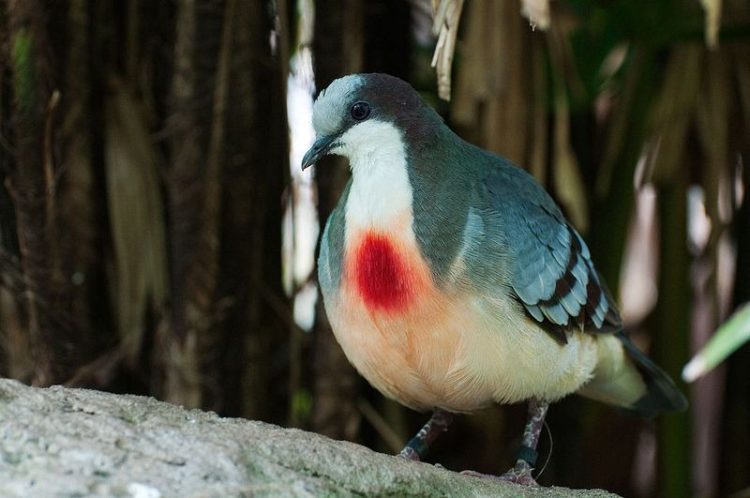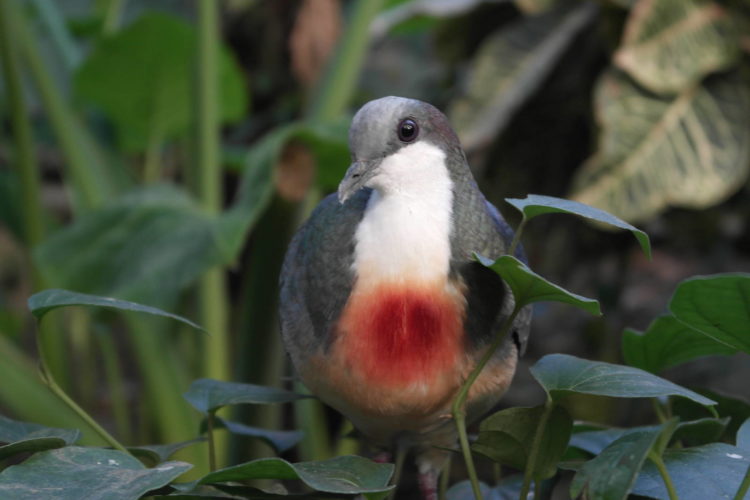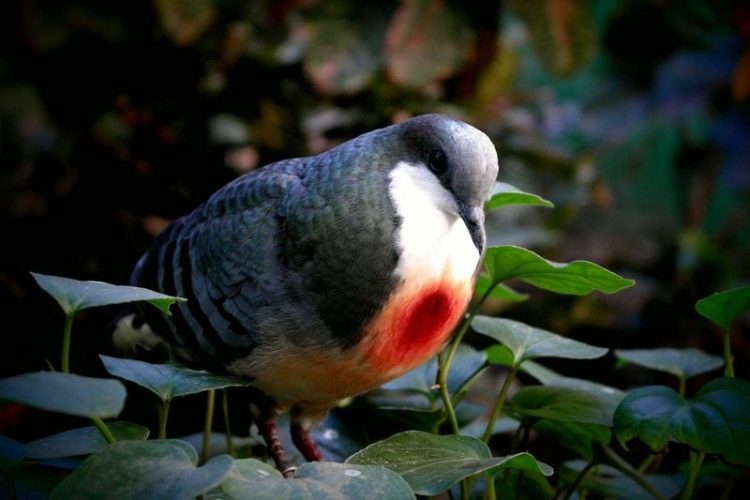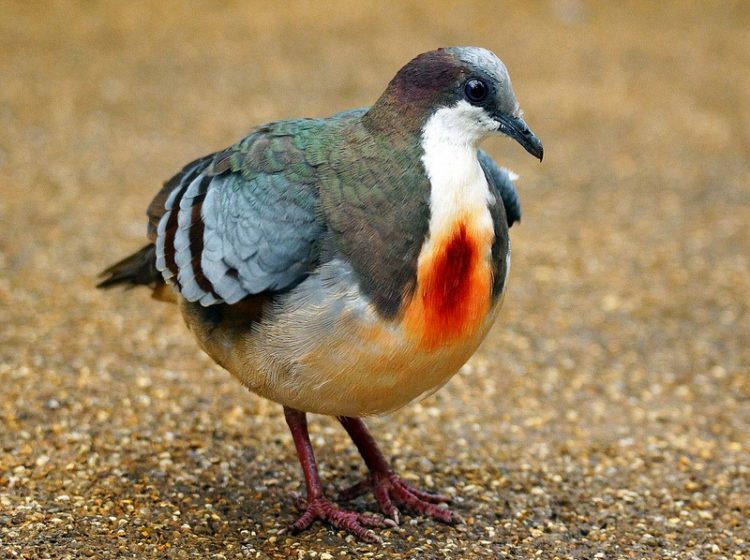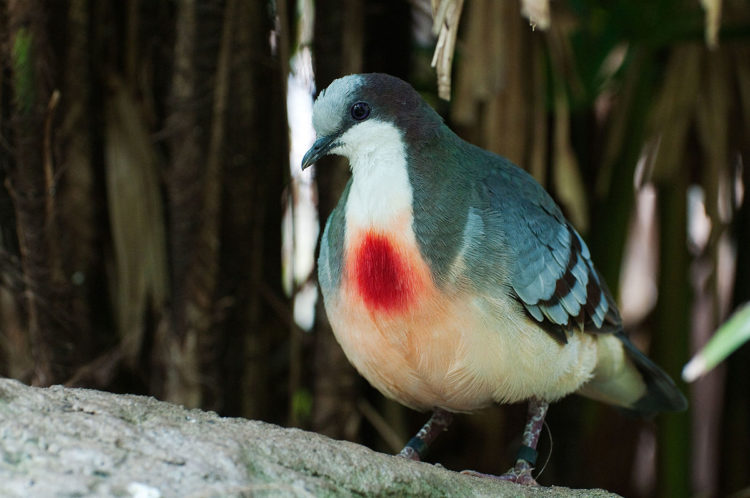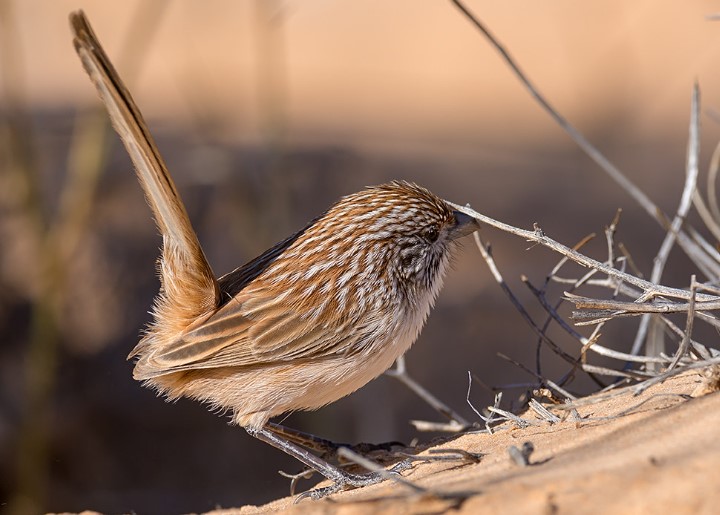The Bleeding Heart Dove (Gallicolumba luzonica) is a very cautious and enigmatic species of dove mainly endemic to the island of Luzon in the Philippines. The Luzon is called “bleeding-hearts” is the species in which the “blood” feature is most pronounced, run down the bird’s breast. The Luzon got it the rare name from a splash of vivid red on their white breasts which look like a bleeding wound.
The Luzon island in the Philippines on which the Luzon bleeding-heart is most abundant, However, the reddish hue spreads down the belly furthering the illusion of blood having run down the bird’s front. The red patch is somewhat brighter in males. When courting, the male inflates his breast to emphasize the red spot. The Luzon bleeding heart is a very fearful bird and hard to observe in its natural habitat.
They are found in three islands in the northern Philippines, including Luzon, where there are many isolated populations, and in the island of Polillo, where a very small population has recently been rediscovered. It has a local name of puñalada. They are found in areas that have dense vegetation, lowland, and tropical forests and have even been known to live near agricultural plantations.
The Luzon bleeding heart can often be heard repeating a soft ‘aa-oooot’ call every three or four seconds. The call lasts for about one second and rises in pitch towards the end. Moreover, short-tailed and long-legged, these entirely terrestrial birds have light blue-gray wings and heads with blackish bills, but because their feathers are iridescent, they can appear to be purple, royal blue, or bottle-green and the apparent color varies with lighting conditions.
The wing coverts are marked with three dark red-brown bands. Their throat, breast, and underparts are white, and lighter pink feathers surround the red patch on the breast. The male and female Luzon bleeding hearts are very similar in appearance and hard to tell apart. The Luzon bleeding-heart dove passes most of the time on the forest floor foraging for seeds, fallen fruits, and small insects among the leaf litter. It leaves the ground and flies to trees only for resting and sleeping.
The species normally built the nest on low trees or in bushes and creeping plants, not very far from the ground. Miserably, the bird is undergoing a moderate decline as a result of habitat loss and fragmentation, caused by deforestation for timber and the expansion of agriculture. Moreover, the bird is vulnerable to hunting and is often trapped by the locals to use a pet.
Also, Read Rare Golden Pheasant! The Majestic Passerine Bird Golden-Hooded Tanager
